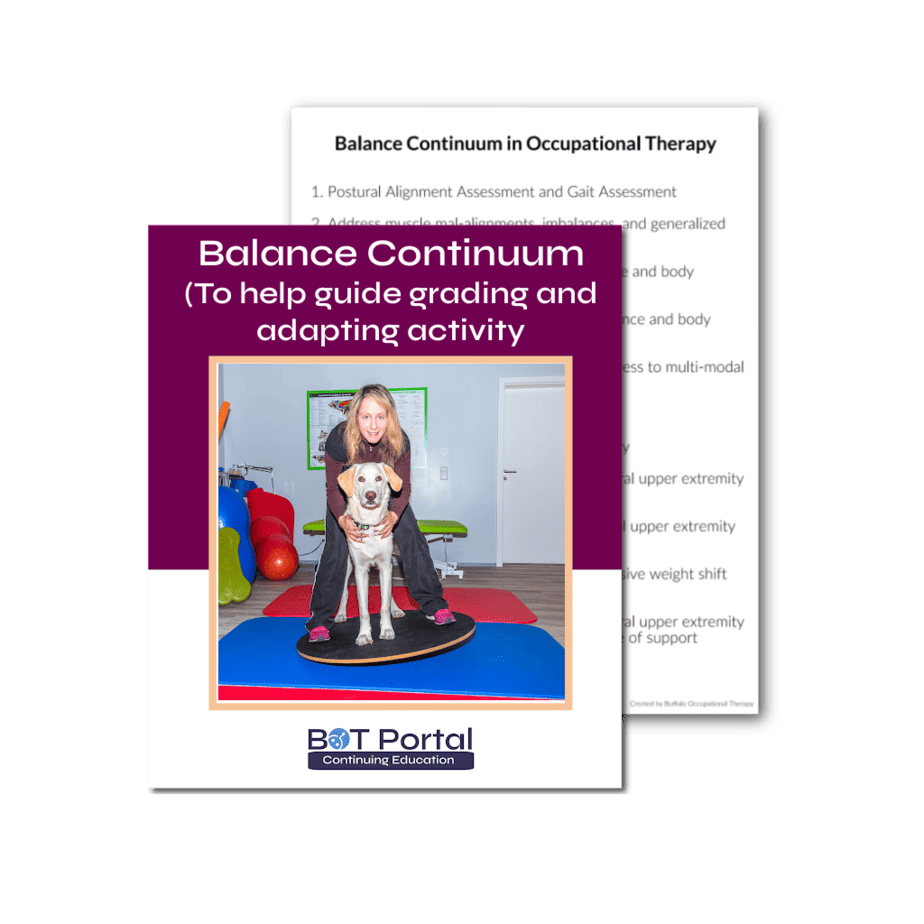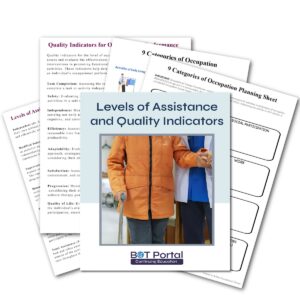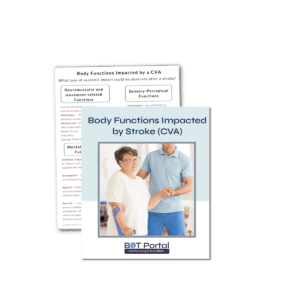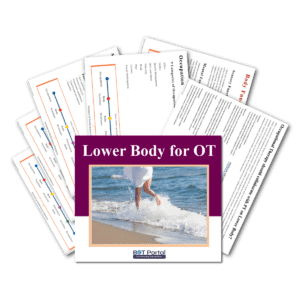Description
Balance Continuum to Guide Grading and Adapting
Note: The Balance Continuum offers ideas to inform daily practice. Many research-supported intervention trajectories are shown to promote remediation, but people are different! This is merely a tool in your toolkit 🙂
In occupational therapy, the balance continuum serves as a foundational framework for optimizing occupational performance and promoting overall well-being. This continuum encapsulates a spectrum of interventions and strategies aimed at enhancing stability, coordination, and mobility across various contexts of occupation. By understanding and implementing the principles of the balance continuum, occupational therapists play a pivotal role in empowering individuals to achieve their occupational goals and lead fulfilling lives.
At the core of the balance continuum lie twelve key components, each addressing specific aspects of balance and stability essential for occupational performance. These components range from postural alignment assessment, sitting continuum, and gait analysis to dynamic standing activities requiring extensive weight shift beyond the base of support. Occupational therapists utilize these components to tailor interventions that meet the unique needs and goals of their clients, fostering gradual progress and skill development.
Education on the balance continuum is imperative for individuals to comprehend the importance of balance and stability in their daily lives. By providing clients with a clear understanding of how each component contributes to their overall well-being, occupational therapists empower them to take an active role in their rehabilitation journey. Clients learn to recognize the significance of maintaining proper posture, engaging in dynamic movements, and transitioning between different postures seamlessly during functional mobility.
Furthermore, education on the balance continuum enables individuals to develop self-awareness and self-management skills. Clients gain insight into their strengths and areas for improvement, allowing them to make informed decisions about their health and well-being. They learn to recognize warning signs of imbalance or instability, enabling them to implement preventive measures and seek timely intervention when necessary.
Occupational therapy’s emphasis on the balance continuum extends beyond the clinical setting to encompass daily activities and routines. Clients are encouraged to incorporate balance-promoting strategies into their everyday lives, such as practicing proper body mechanics during household chores or engaging in dynamic standing exercises while performing work-related tasks. By integrating these strategies into their routines, individuals enhance their overall functional capacity and quality of life.
Other helpful links:
Check out BOT Portal: Resource Site for Occupational Therapy Students and Practitioners
Planning Process for Occupational Therapy Treatment Continuum




